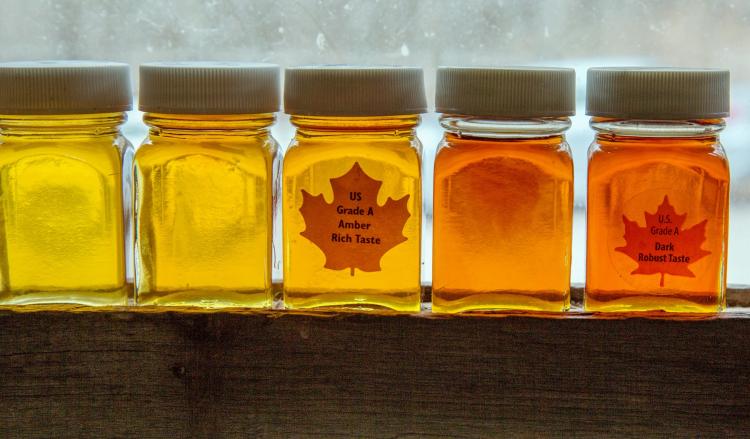
More About National Maple Syrup Day
Get the flapjacks ready for National Maple Syrup Day. December 17th calls for orders of pancakes, french toast or biscuits topped off with butter and delicious maple syrup.
It is usually from the xylem sap of sugar maple, red maple or black maple trees that maple syrup is made from although it not limited to those maple species.
These trees, in cold climates, store starch in their trunks and in their roots. In the spring, the starch is then converted to sugar that rises in the sap. The maple trees are then tapped by boring holes into their trunks and the released sap is collected. After the sap is collected, it is processed by heating to evaporate much of the water, leaving the concentrated syrup.
Maple syrup was first collected, processed and used by the indigenous peoples of North America. The practice was then adopted by the European settlers who gradually refined production methods. In the 1970s further refinements in the syrup processing were made with technological improvements.
A maple syrup production farm is called a sugarbush or a sugarwood.
Sap is boiled in a sugar house which is also known as a sugar shack, sugar shanty or a cabane à sucre.
Up until the 1930s, the United States led in maple syrup production, now Canada is the world’s largest maple syrup producer.
Serve up a breakfast worthy of real maple syrup. Whether you crave pancakes, biscuits or some light crepes, be sure to share them using #MapleSyrupDay to post on social media.
NATIONAL MAPLE SYRUP DAY HISTORY
It’s a sticky subject, but National Day Calendar continues researching the origins of this sweet holiday. Pass the syrup!
**Photo by Cindy Baker, Markelton, PA**
It is usually from the xylem sap of sugar maple, red maple or black maple trees that maple syrup is made from although it not limited to those maple species.
These trees, in cold climates, store starch in their trunks and in their roots. In the spring, the starch is then converted to sugar that rises in the sap. The maple trees are then tapped by boring holes into their trunks and the released sap is collected. After the sap is collected, it is processed by heating to evaporate much of the water, leaving the concentrated syrup.
Maple syrup was first collected, processed and used by the indigenous peoples of North America. The practice was then adopted by the European settlers who gradually refined production methods. In the 1970s further refinements in the syrup processing were made with technological improvements.
A maple syrup production farm is called a sugarbush or a sugarwood.
Sap is boiled in a sugar house which is also known as a sugar shack, sugar shanty or a cabane à sucre.
Up until the 1930s, the United States led in maple syrup production, now Canada is the world’s largest maple syrup producer.
Serve up a breakfast worthy of real maple syrup. Whether you crave pancakes, biscuits or some light crepes, be sure to share them using #MapleSyrupDay to post on social media.
NATIONAL MAPLE SYRUP DAY HISTORY
It’s a sticky subject, but National Day Calendar continues researching the origins of this sweet holiday. Pass the syrup!
**Photo by Cindy Baker, Markelton, PA**
Date & Time
December 17, 2022
Communities
Add to My Calendar
Did you know you can follow any of our 175 Special Interest calendars and stay informed better than ever before? See them here. You can also create your own public or private calendar here. Post events to your calendar and ours at the same time! Terms and conditions may vary based on the policies of your local Town Planner publisher.
To learn more, watch our intro video!
